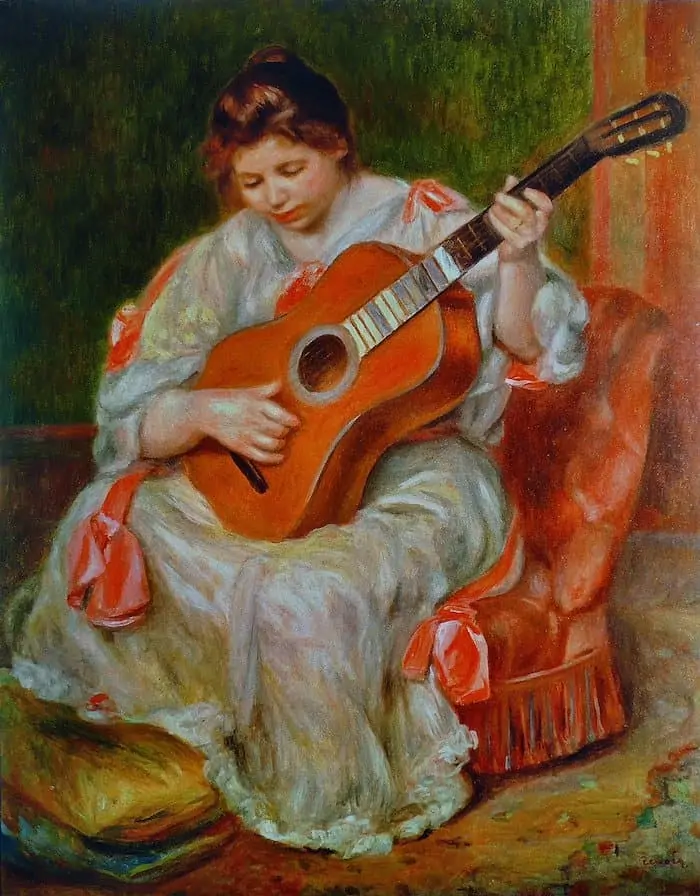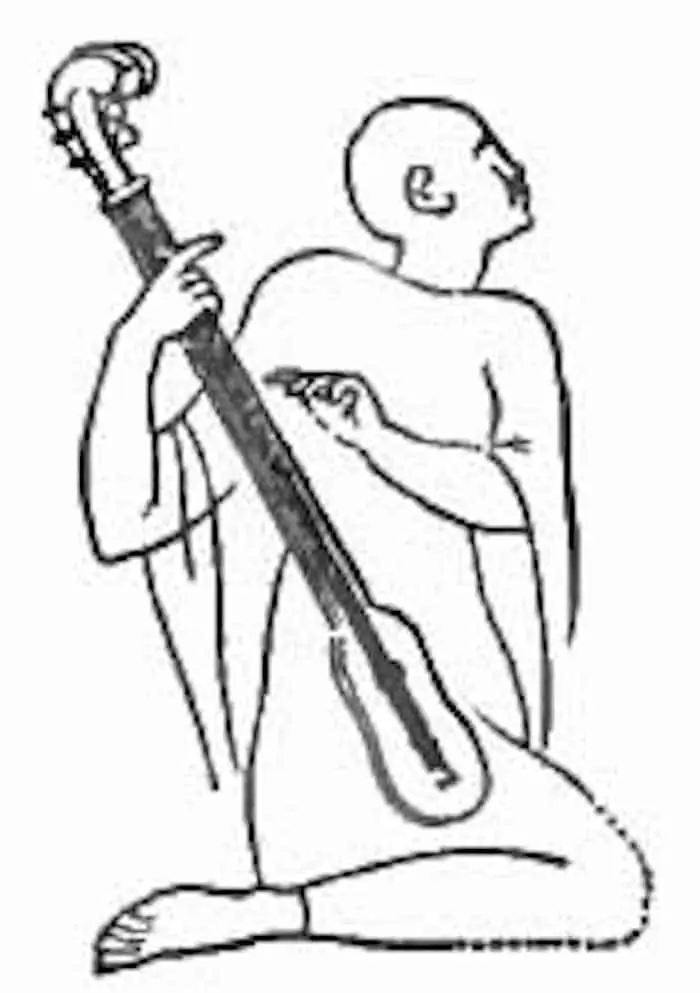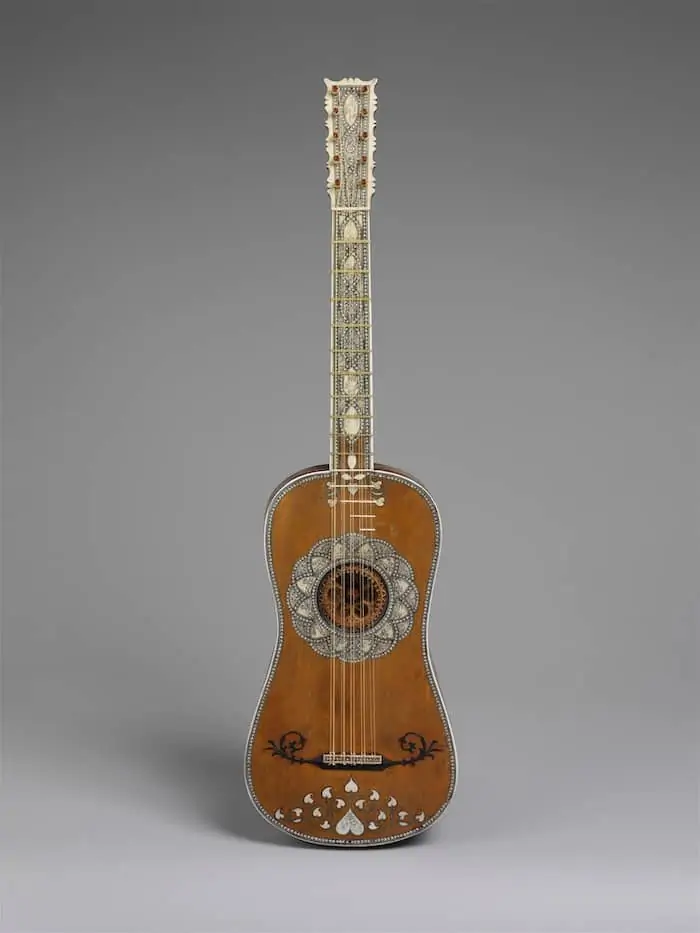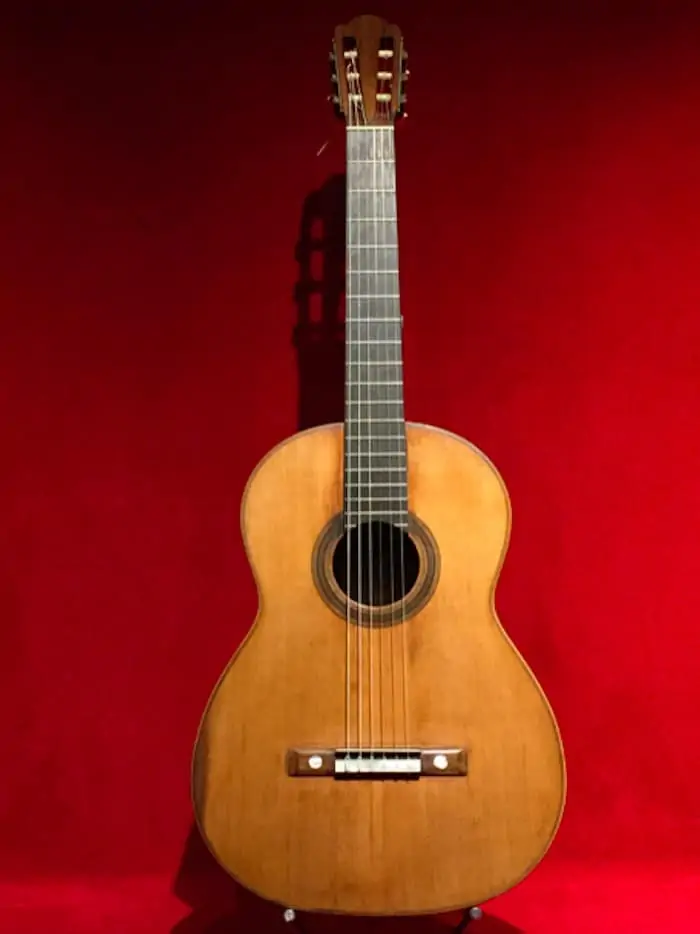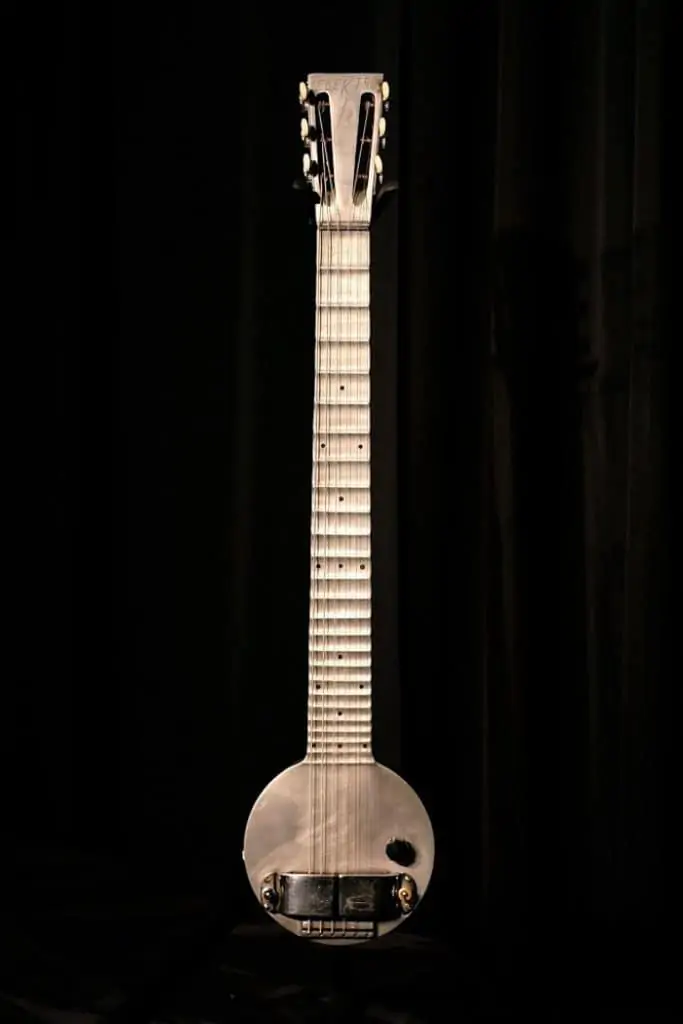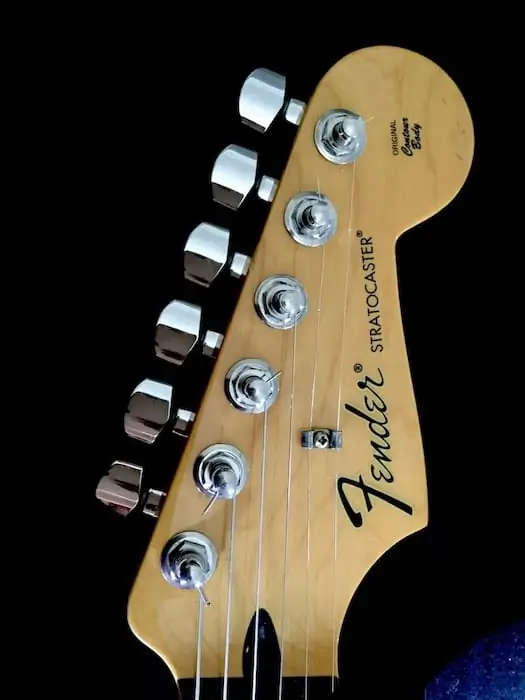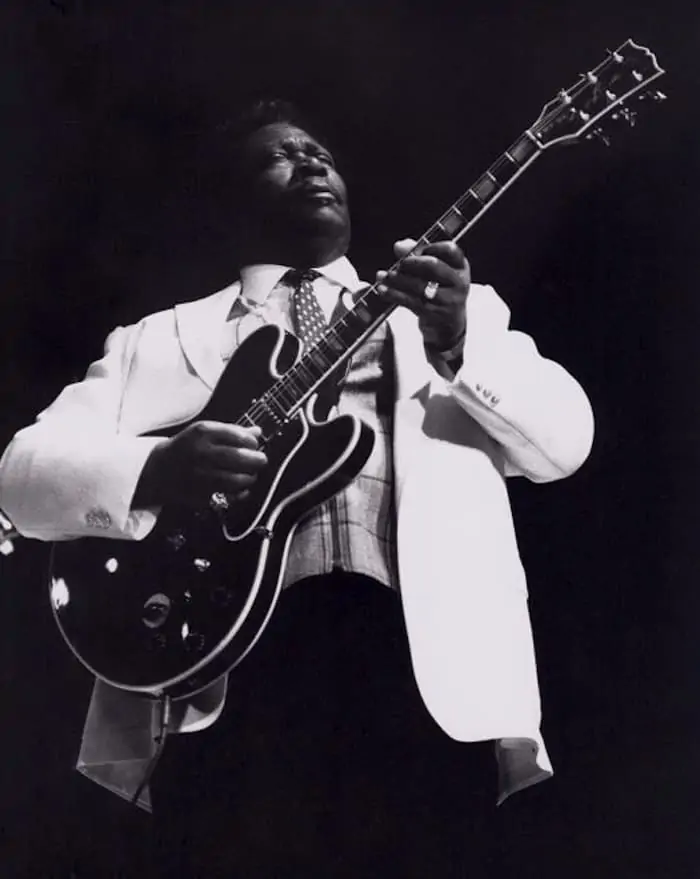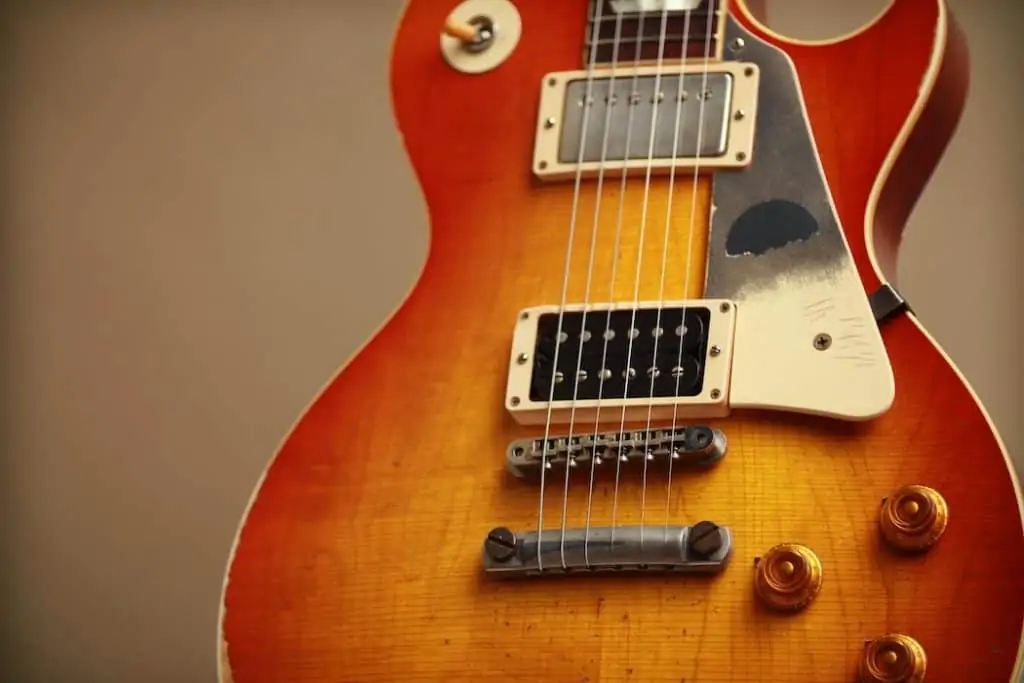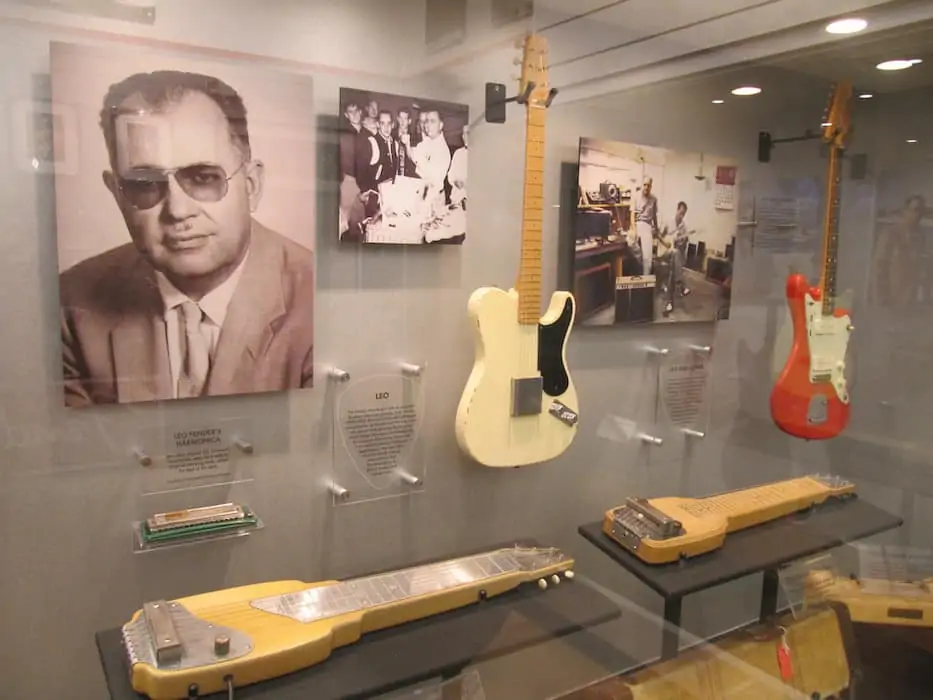You’ve been playing guitar for a while now. But how well do you really know this iconic instrument?
Ace your next trivia night (or just impress your friends) with these fascinating facts –– covering everything from ancient instruments to legendary players to the latest World Records.
Contents
Popularity Guitar Facts
Chuck Berry’s 1956 hit “Roll Over Beethoven” helped guitar-driven music take over the airwaves. But Chuck wasn’t the first to ditch sonatas for rockin’ solos. And he definitely won’t be the last!
Guitar music first exploded in the late 1800s
Guitars first appeared in Spain, where they replaced a lute-like instrument called the vihuela. But they were considered too amateur for serious performers. “Real” musicians played piano, violin or flute.
This all changed in the late 1800s/early 1900s. Virtuosos like Franciso Tárrega and Andrés Segovia took the guitar off the streets and brought it into the orchestra. They made it respectable by adapting it to pieces by Bach, Rameau and Mozart.
Even outside Spain, guitars became permanent fixtures in living rooms. Soon, they weren’t just the territory of high-brow Baroque and Classical music. They were also driving folk and popular genres.
Many Renoir paintings, like “Woman Playing A Guitar” (1897), feature middle-class Parisians shredding it up. (“Pierre-Auguste Renoir – Joueuse de guitare” by Pierre-Auguste Renoir / CC0).
Bonus facts:
- The first guitars were strictly rhythm instruments and had to follow whatever key the singer was in (instead of the other way around).
- Segovia also encouraged a new generation of musicians, like Heitor Villa-Lobos, to compose their own classical guitar pieces with complex melodies.
- Guitars were cheaper (and obviously more portable) than pianos. This contributed to their popularity.
- Parlors and other small steel-string models debuted during this period.
It’s the world’s second most popular instrument
Sorry Chuck Berry –– it doesn’t look like Beethoven is rolling over in his grave yet. After all, piano is still the world’s most popular instrument.
Luckily, guitar is a close second, with 50 million players worldwide.
Bonus facts:
- This number includes acoustic, electric and bass players.
- According to a 2018 study, 50% of new or aspiring guitarists are women. 25% are Hispanic/Latino and 19% are Black.
Origin Guitar Facts
The world’s love affair with guitars is only 150 years old. But our beloved instruments have an ancient history, beginning with the first chordophones (stringed instruments) thousands of years ago.
The word “guitar” has Sanskrit roots
The English “guitar” comes from the Spanish guitarra, which referred to a type of medieval lute. But the word guitarra goes back even further!
A lot of ancient chordophones from west/central/south Asia had the suffix (word ending) –târ. This means “string” in Sanskrit. It also appears in modern Persian and other related languages.
There’s no way to know for sure. But chartâr (“four strings” in medieval Persian) might be the original form of guitarra.
Bonus facts:
- Guitarra is the short-form of guitarra latina (Latin guitar). This lute had a short neck, while the guitarra morisca (Moorish guitar) had a long neck.
- The ancestor of the guitar was probably brought to Europe, along with other types of lutes.
The oldest guitar-like instruments came from Egypt and Mesopotamia
3500 years ago, a singer named Har-Mose was buried with a 3-string chordophone. It was made of rawhide stretched over a cedar body. It even had a pick attached by a cord!
You can find this ancient “guitar” at the Egyptian Museum in Cairo.
Some images of ancient Egyptian “guitars” date back 2000 years. This drawing is newer, taken from the 1911 “Encyclopædia Britannica” (“Line drawing of an ancient Egyptian guitar” by Unknown author / CC0).
Another instrument with ancient roots is the tanbur. It looks a bit like a guitar with a round body. The original tanburs were probably invented 4000 years ago in Mesopotamia (parts of modern Iraq, Kuwait, Syria and Turkey).
Bonus facts:
- Har-Mose performed at the court of Hatshepsut, Egypt’s first woman pharaoh.
- Modern tanburs are still popular folk instruments in west, south and central Asia.
The Kurdish “tembur,” played in Iran (“Tambur” by allauddin / CC BY-SA 3.0).
The oldest image of a guitar-like instrument was found in Turkey
A Hittite bard was the first “guitar” hero to be immortalized in art. He appeared on a 3300-year-old stone carving at Alaca Höyük in Çorum, Turkey.
Bonus facts:
- This chordophone has a fancy tassel at the headstock.
- You can find the relief at the Museum of Anatolian Civilizations in Ankara.
6-string guitars are a new invention
In the 1500s, the earliest guitars looked and sounded a lot like vihuelas and lutes. They had a small oval body, a sound hole and 4 courses of strings (3 double sets on the bottom, 1 single on the top).
A typical Baroque guitar, dating to the mid-1600s
A 5th course was added in the late 1500s and a 6th course in the 1700s. But the double strings weren’t replaced with singles until the 1800s.
Bonus facts:
- The first 4-course guitars were tuned to C (double strings) – F (double) – A (double) – D (single).
- EADGBE has been the standard 6-string tuning since the 1800s.
Strings and frets were originally made of animal guts
Like guitar strings, frets were originally made from the intestines of sheep, pigs and cows.
Metal frets became the norm in the 1700s. But it wasn’t until the 1900s that nylon strings replaced gut strings.
Bonus facts:
- Fret gut was tied around the neck.
- You can still buy fret gut and gut strings from vintage sellers.
Antonio Torres developed the first modern guitar
In the mid 1800s, a Spanish luthier named Antonio de Torres Jurado started experimenting with the design of classical guitars. His basic form is still used today.
This Torres original was made in 1862 (Cropped from “Guitarra de Torres” by Aleix herreras2 / CC BY-SA 3.0).
Bonus facts:
- Torres increased the size of guitar bodies, but made the soundboard thinner. He also stabilized the neck, extended the fretboard and coated the bottom three gut strings in a silk and metal wrap.
- Because of his work, Torres is often called the “Stradivari of guitars” (after Antonio Stradivari, the inventor of the modern violin).
Innovation Guitar Facts
Guitar designs, hardware and tones are constantly evolving. Let’s look at some of the most impressive innovations…
The first electric guitar dates to 1931
Musician George Beauchamp and electric engineer Adolph Rickenbacker joined forces to create a new type of guitar that could be electrically amplified. Officially the Rickenbacker Electro A-22, it was nicknamed the “Frying Pan” thanks to a round body and long neck.
The “Frying pan” was a lap steel guitar. It was inspired by Beauchamp’s love of Hawaiian music (“Ro-Pat-In Cast Aluminum Electric Hawaiian ‘Frying Pan’ Guitar” by Museum of Making Music / CC BY 3.0).
Bonus facts:
- The Frying Pan had two horseshoe magnets as its pickup.
- Beauchamp and Rickenbacker’s Ro-Pat-In Company was later renamed Rickenbacker. Their guitars were popular with The Beatles, The Who, REM and more.
- Although Beauchamp applied for the patent in 1932, he didn’t receive it until 1937. By this time, Gibson had already released their first electric guitar –– the hollow body ES-150.
- The Fender Telecaster (originally called the Broadcaster) was the first successful, mass-produced solid body electric. It was released in 1951.
The first Fender Stratocaster was sold in 1954
The Tele may be the OG Fender model. But the Stratocaster is probably the most iconic electric guitar of all time.
The first Strat was released in April 1954. It had revolutionary specs, like 3 single-coil pickups and a contour body. It also came with a sunburst finish.
Strats have been in non-stop production for almost 70 years.
Bonus Facts:
- The first-ever Strat has the serial number 0100. David Gilmour’s #0001 Strat was made 1 year later.
- Strat #0001 has a gold pickguard, gold hardware and a 3-way selector switch. It was probably intended as a showpiece instead of a proper instrument.
- Strat #0100 was auctioned off in 2014 for $250,000. It was bought by an anonymous American.
Ibanez popularized 7- and 8-string guitars
7- and 8-string classical guitars have been kicking around since the 1800s. But Ibanez was the first company to mass produce extended range electrics.
They debuted the 7-string UV7 in 1990 and the 8-string RG2228 in 2007.
Electric 8-strings are especially popular with metal and jazz musicians.
Bonus facts:
- Fender made a 7-string prototype in the 80s, but never released it.
- Steve Vai introduced the UV7 on his Passion and Warfare album.
- The UV7 almost had a high A string instead of a low B string. But the A string broke too easily.
- 7-string acoustics are popular in Russian and Brazilian folk music.
The guitarist from Nitro invented the double guitar
Michael Angelo Batio (MAB)’s double guitar is one-of-a-kind. Instead of just a double neck, it has two separate bodies attached at the bottom corner.
MAB has to use string dampeners to control feedback from the instrument (“Batio with his double guitar” by Jorgesys12 / CC BY-SA 3.0).
Bonus facts:
- It was built by Mike Lipe, a master luthier at Dean Guitars.
- Before designing the double guitar, MAB attached a Gibson Flying V to a snare drum, so he could play it left handed.
- You can see it on display at the Rock and Roll Hall of Fame.
He also invented the quad guitar
What’s even more impressive than MAB’s double guitar? His quad guitar. This wacky instrument has two 7-string necks at the top and two 6-string necks at the bottom. Each neck belongs to a separate guitar, joined by a large plate.
Bonus facts:
- It was built by Wayne Charvel, with input from Gibson.
- The quad made its debut in Nitro’s 1989 “Freight Train” video.
- The original quad was stolen by a fan. MAB later recovered two of the four sections.
- Mike Lipe built MAB a new quad in 2008.
Guitar World Records
There’s no shortage of guitar-related feats in the Guinness World Records. Here are some of my favorite facts from the list…
Largest guitar in the world
The world’s biggest playable electric is 43 ft (13 m) long and weighs over 2200 lbs (1000 kg). This makes it roughly the size of a bus.
This giant was built by the Academy of Science and Technology in Conroe, Texas in 2001.
The world’s largest playable acoustic is even bigger, clocking in at 59 ft (17 m) and 8800 lbs (4000 kg). It was completed in 2001 by Paulo Pimental of Porto, Portugal.
Bonus facts:
- The giant electric is shaped like a Gibson Flying V.
- Its strings are made out of aircraft cables.
- The first chord to be played on the electric was the mysterious opening chord of “A Hard Day’s Night” by the Beatles.
- The giant acoustic was built to commemorate Porto’s designation as a European Capital of Culture.
Smallest guitar in the world
In 1997, researchers at Cornell carved a silicon guitar measuring just 10 microns (1/100 000 meters) long, with strings 0.05 micrometers thick. To put it in perspective, it’s the length of a human blood cell and 1/20 the width of a strand of hair.
Bonus facts:
- This tiny instrument can be played with special equipment. But the frequencies are too high for humans to hear.
- It is shaped like a Fender Strat.
- It took the researchers just 20 minutes to complete.
Most expensive guitar in the world sold at auction
In 2020, Kurt Cobain’s acoustic from Nirvana’s 1993 MTV Unplugged performance sold for $6.01 million. The lucky owner is RØDE Microphones founder Peter Freedman.
Bonus facts:
- Cobain’s guitar is a left-handed Martin D-18E.
- Freedman plans to tour the guitar around his native Australia to raise money for musicians affected by the pandemic.
Most valuable guitar in the world
A jewel-covered Gibson SG? Yes please! This luxurious axe, created by Aaron Shum Jewelry of Hong Kong, boasts over 11 400 diamonds (measuring 401 karats) and 1.6 kg (18 karats) of white gold.
In 2015, it was valued at $2 million.
Bonus facts:
- The guitar’s name is “The Eden of Coronet.”
- Led by designer/musician Mark Lui, it took 68 people over 700 days to create the guitar.
- It was unveiled at the Swiss Baselworld exhibition –– a watch and jewelry trade show.
Longest marathon playing guitar
What’s the best way to spend a work week? For Ireland’s Dave Browne, it’s setting the world record for the longest guitar playing session.
With only 30 second breaks between songs, Browne played for 114 hours, 6 minutes and 30 seconds at Temple Bar in Dublin. The pub stayed open for the entire set, from June 12th-17th 2011.
Bonus facts:
- Browne used an axe once played by Stevie Ray Vaughan.
- He played 1372 songs, starting with Dusty Springfield’s “Son of a Preacher Man” and ending with U2’s “With or Without You.”
<iframe width=”560″ height=”315″ src=”https://www.youtube.com/embed/VX9871aR6lw” frameborder=”0″ allow=”accelerometer; autoplay; clipboard-write; encrypted-media; gyroscope; picture-in-picture” allowfullscreen></iframe>
Check out this short clip of Dave Browne’s record-breaking performance.
Miscellaneous Guitar Facts
These facts don’t fit in any particular category. But they reveal some interesting stories about guitar virtuosos, legendary luthiers and modern music lovers.
Jimi Hendrix is the most influential guitarist of all time
Is anyone really surprised that Jimi Hendrix constantly tops the polls as the greatest guitarist of all time? One listen to “Voodoo Child (Slight Return)” or “Little Wing” is enough to see why.
Hendrix influenced hundreds of later virtuosos, like Eddie Van Halen, Yngwie Malmsteen and Tom Morello. But no one has ever copied his unique, improv-driven, high-gain, psychedelic sound. And that’s what makes Jimi Hendrix so legendary.
Bonus facts:
- A left handed player, Jimi Hendrix played a right-handed electric upside down, with the strings strung backward.
- He was inducted into the Rock and Roll Hall of Fame in 1992
- He had a range of musical influences, like BB King, Curtis Mayfield, Eddie Cochran and Bob Dylan.
BB King’s Lucille has an unusual backstory
BB King with his beloved custom-made Gibson (“King playing his favorite guitar, Lucille, in the 1980s” by Ronzoni / CC BY-SA 3.0).
When BB King was first starting out, he performed at a dance hall in Twist, Arkansas. Two men were fighting over a woman named Lucille who worked at the hall. They ended up knocking over a barrel of kerosene that was being used as a space heater on the dance floor. The entire building went up in flames!
King ran out the door, but realized that he had left his guitar inside. He ran back in to save it, just before the building collapsed. He christened his prized axe Lucille as a double reminder –– to never fight over a woman and never leave a building without it.
Bonus facts:
- BB King owned dozens of “Lucilles.” The most famous were a Gibson ES-355 and a custom model launched in the 80s.
- In 2005, Gibson made King a “Super Lucille” for his 80th birthday. It was stolen in 2009, but later found in a Las Vegas pawn shop.
Les Paul is the only person inducted in both the Rock and Roll Hall of Fame and Inventors Hall of Fame
Nowadays, the name “Les Paul” is synonymous with Gibson’s pioneering solid body electric. But the guitar’s human namesake is just as iconic.
Les Paul was a successful jazz and country musician, as well as a part-time inventor. He not only created the first Les Paul guitar. He also experimented with multi-track recording and special effects like delay and phasing.
The 1958-59 sunburst Gibson Les Paul was originally a commercial flop. Now, it’s one of the most sought-after vintage guitars.
Bonus facts:
- The Gibson Les Paul was first launched in 1952 to compete with Fender’s Telecaster.
- “The Log” was the original guitar that Les Paul used to inspire the Gibson model.
- Les Paul is one of the few Rock and Roll Hall of Famers with a permanent exhibit.
Leo Fender couldn’t play guitar
It’s hard to believe, but the iconic inventor never actually learned to play guitar. Legend says he didn’t know how to tune one either!
But this didn’t stop the self-taught electronics whiz from creating iconic instruments.
A display of Leo Fender’s electric guitar prototypes (“Fender Guitar Factory museum” by Mr. Littlehand / CC BY 2.0).
Bonus Facts:
- Fender started working with radios, before switching to musical instruments in the 40s.
- He played saxophone and knew a bit of piano.
You can marry your guitar
In this video, Chris Black talks about his marriage to his new Mrs.
In 2001, a British guitarist named Chris Black became the first person to marry a guitar. His “bride” was a red Fender Strat named “Brenda the Fenda.” After 35 years of dating, they tied the knot at a London church in London. One of Chris’s friends officiated the ceremony while the vicar was away.
More recently, Harri Best made headlines by marrying his guitar in an extravagant ceremony in Lagos, Nigeria. He shared the news in a 2018 Instagram post.
Bonus facts:
- Chris Black decided to marry his guitar to cheer people up.
- His marriage was technically bigamous, since he was also married to a human woman.
- In his post, Harri Best called music the love of his life. He insisted that marrying a guitar was the most sane thing he’s ever done.
There is a guitar-shaped forest in Argentina
This human-made forest in the Pampas region was the work of a farmer named Pedro Martin Ureta and his four children. It contains over 7000 eucalyptus and cypress trees.
Bonus facts:
- Pedro was inspired to create the forest by his wife Graciela. She once flew in a plane over a forest that looked almost like a milk pail. As a music lover, she told Pedro that it would be better to plant a forest shaped like a guitar.
- Graciela died from a pregnancy-related aneurysm in 1977. A grieving Pedro began planting the forest in her memory.
- Pedro is afraid of flying and has only seen pictures of his forest.
The Fender factory makes 90 000 strings each day
According to some reports, the Fender factory makes around 90,000 guitar strings per day. If you laid each string end to end, it would stretch over 20,000 miles. This is long enough to circle the Earth!
Bonus facts:
- Fender originally got their strings from V.C. Squier Company. When they bought out the company in 1965, the strings were replaced with the Fender brand name. The Squier name would later become Fender’s budget guitar line.
- Fender makes bullet end strings designed specifically for tremolo blocks on a Stratocaster.

